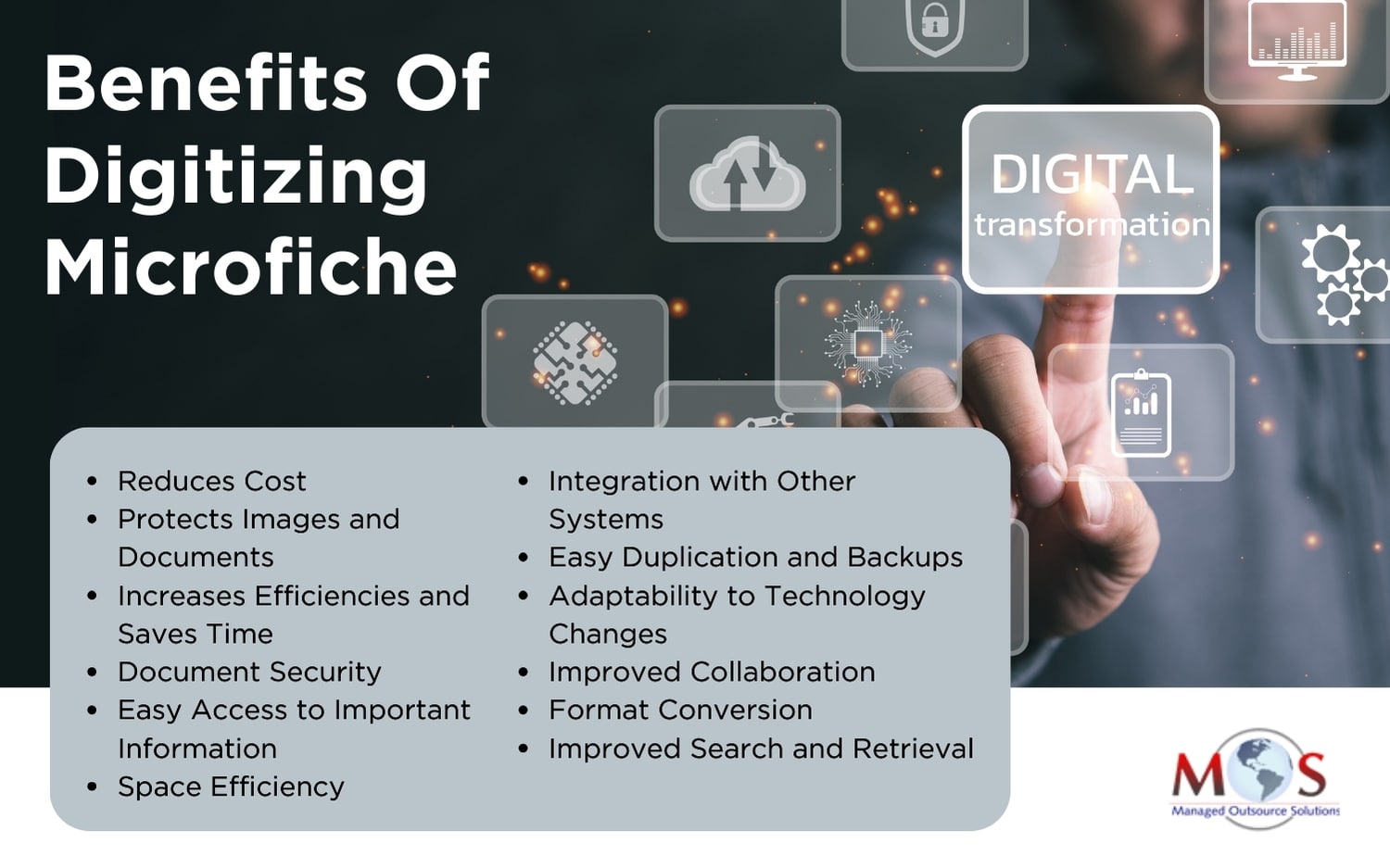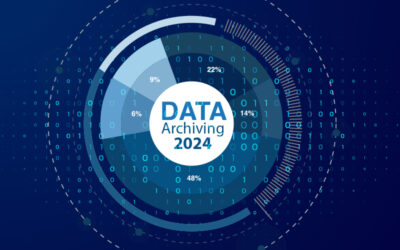In the past, microfiche was the preferred method for preserving and backing up records-from payroll and accounting, marriage licenses, and court transcripts to national archives, registers, journals, books, newspapers, magazines, and more. It offered a compact storage solution for vast amounts of information.
Today, digital technology is transforming the way many organizations and businesses store their records and data. Document scanning companies are helping them to move documents on microfiche into the digital age. Transforming these records into digital formats ensures improved preservation, effortless accessibility, and unique possibilities for data analysis. The advantages range from space-efficient solutions and enhanced search capabilities to improved data security and collaborative opportunities.
Benefits of Digitizing Microfiche
With microfiche scanning, you can increase your physical storage capacity and permanently store your documents on servers, hard drives, or the cloud. Libraries, museums, and governmental institutions are among the many industries that depend on scanning services to digitize and preserve their priceless data are.
Scanning and digitizing microfiche offers numerous benefits:
Reduces cost
Depending on how many microfiche your company has, you might need to rent storage space. Digitizing microfiche allows your organization to reclaim the space that would have been occupied by film and specialized equipment needed for reading and printing files.
Protects images and documents
Digitization of microfiche ensures the protection, accessibility, and longevity of valuable images and documents. Digitized microfiche content can be easily accessed and retrieved from digital storage systems.
Increases efficiency and saves time
Once microfiche records have been digitalized, you won’t have to rummage through shelves to locate the film. When scan the microfiche with optical character recognition (OCR) software. You can quickly get the desired documents or photos by doing a text search. You can update or redact the information on the images using special software without changing the original file. This is very helpful if you need to distribute a document but it contains private information like Social Security numbers.
Document security
Moisture causes microfiche to deteriorate, and depending on the extent of the damage, it might be challenging to restore. Digitizing the images enables you to create backups on servers and external storage systems. To guarantee that only authorized personnel can access the information, the digital files can be secured with password protection.
Easy access to important information
It is challenging to view historical archives kept on microfiche. Interested parties would need to go to a library, museum, or other location to view a copy. When digitized, the files can be shared online, uploaded to webpages, or attached to emails. It’s also easy to store the digital files on USBs and portable drives, and print and fax them.
Microfiche Scanning Process Steps
Transforming analog microfiche documents into digital format involves several steps:
Preparation
Make sure the microfiche sheets are clear of dust and debris and arrange them in a logical order. Find and collect any pertinent metadata, such as titles, dates, or other details, regarding the documents on the microfiche that can be used for indexing.
Quality Check
Examine the microfiche for any physical flaws or damage that could interfere with the scanning procedure. Make sure the images are readable and clear.
Microfiche Scanning
Make high-resolution digital copies of every page using a microfiche scanner. To maximize image quality, adjust parameters like brightness, contrast, and resolution. Depending on the scanner’s capabilities, the process might include taking pictures of single frames or whole microfiche sheets.
Image Enhancement
Use image enhancement techniques to raise scanned image quality and clarity. To guarantee the best readability, this may involve adjusting the brightness, contrast, and sharpness.
File Format and Compression
Select a suitable digital file format (such as TIFF, PDF, or JPEG) for the scanned images. Use compression techniques to minimize file sizes without sacrificing tolerable image quality.
Indexing and Metadata
Include pertinent metadata, such as dates, document titles, or other identifying information with every scanned image. To make retrieval and searching of the digital file easier, create an index or database.
OCR (Optical Character Recognition)
Use OCR software to identify any text on the microfiche and turn it into editable, searchable digital text.
Quality Assurance
Perform a comprehensive quality check on the digital files to guarantee accuracy and comprehensiveness. Make sure the digital images appropriately depict the original content from the microfiche and that every page has been successfully scanned.
Storage and Backup
The digital files should be kept in an orderly and safe manner on local servers or in cloud storage. Have backup plans in place to guard against data loss and guarantee long-term preservation of the digital files.
Access and Retrieval
Connect the digitalized microfiche material to pertinent databases, document management systems, or other systems. Verify the digital files’ retrieval and accessibility to make sure end users can access them quickly and easily.
Training
Provide the necessary training to the staff on how to use the new digital system, including any search and retrieval features.
Ready to Go Paperless?
Take the first step – Convert your documents now!
Click for hassle-free digital transformation.
The push for digitization in recent years has aided numerous industries in their efforts to achieve the paperless office. Going digital is crucial for preserving, safeguarding, and storing vital records. Numerous expert document scanning services are available that offer microfiche conversion to digital at reasonable rates.
Transform your documents into digital files and elevate your document management game.





